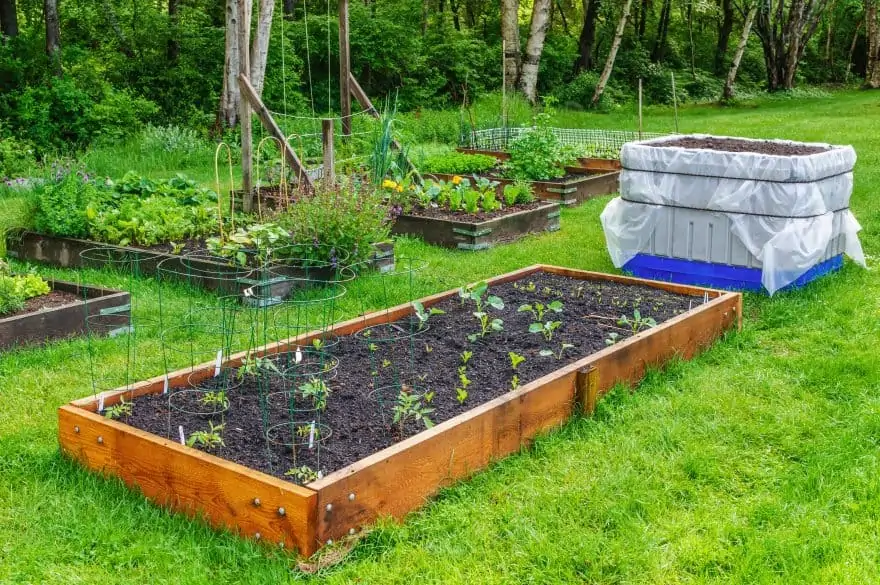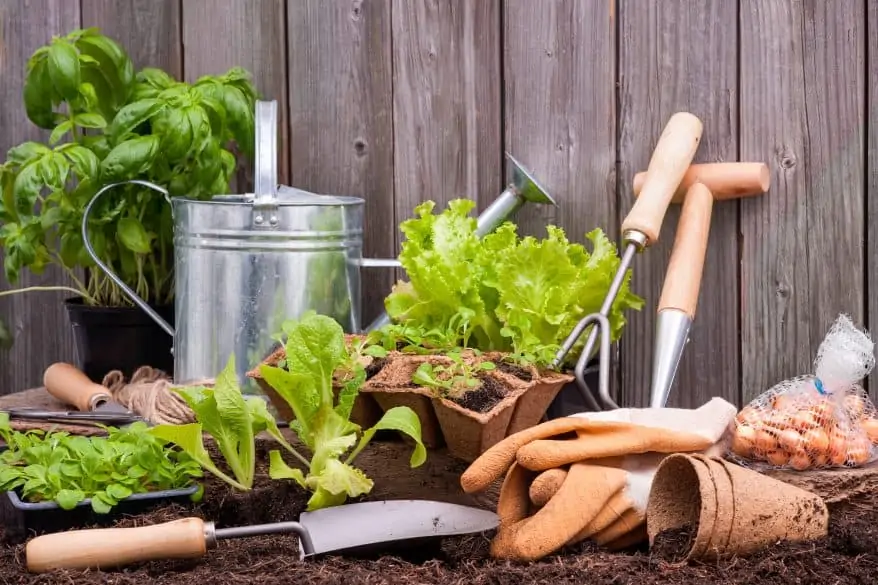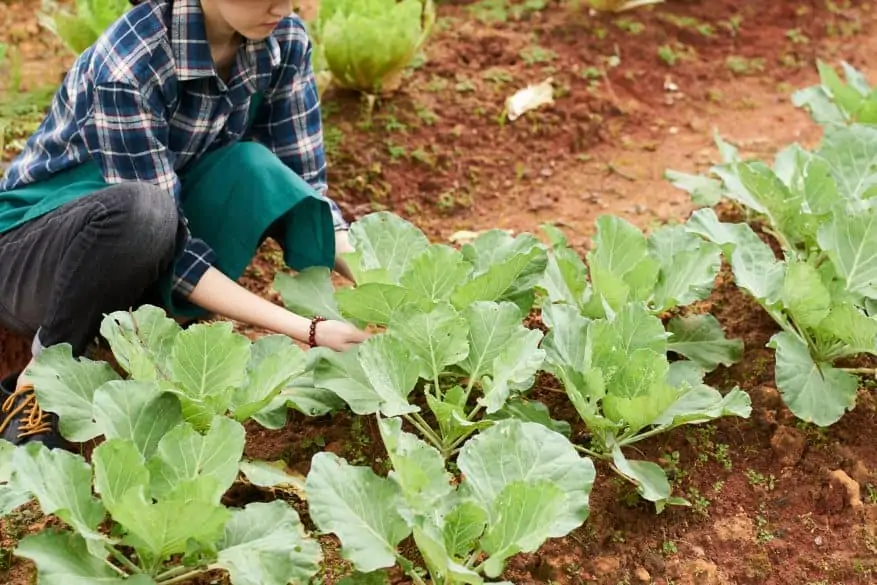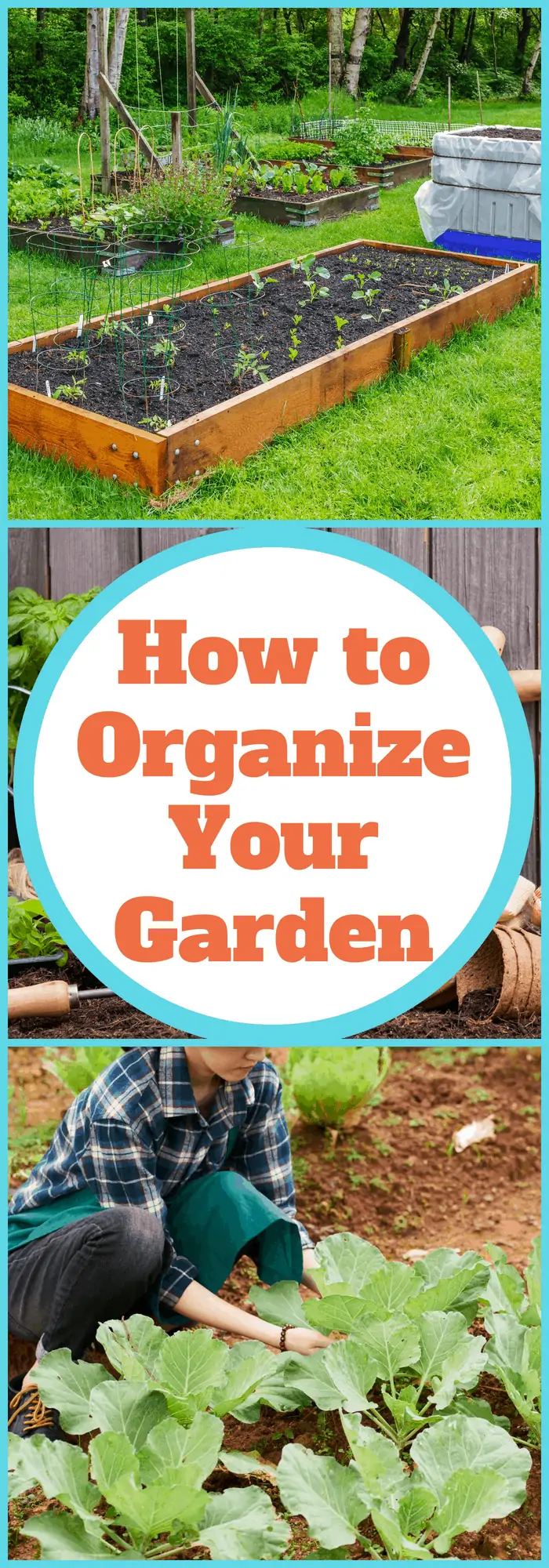There are few things as rewarding as gardening. Whether you’re growing produce for your table or beautiful flowers, it’s lovely to watch things grow. We often think of gardening as a messy pastime because you’re digging in the dirt.
But dirty and disorganized are two different things. An organized garden is not only more attractive, it’s easier to work in and the plants are healthier. To help you create an attractive and functional garden, check out these tip for how to organize your garden.
5 Tips for How to Organize Your Garden
You can never plan your garden too early, or with too much detail. Here are five simple things that will make this years’ garden so much easier!
1. Plan Your Garden on Paper
The first step to organizing your garden happens before you even begin planting. Before you start planting, make a plan on paper. I think of it as drawing a map of the garden.
A map of your garden will help you make the best use of your space. Decide where everything will be, grouping green vegetables in one area, herbs in another. And root vegetables together.
A map can also help determine if you have enough room for all the things you want to plant. Avoid waste by waiting to purchase plants or seeds until you know how much room you have to grow things. And what exactly you want to grow.
2. Mark Your Calendar
To all things, there is a season and this is rarely truer than in gardening. Plants are seasonal, with growing seasons that might be different than what you expect. I often underestimate how early I need to get my plants and seeds in the ground.
Do a little homework on the plants you anticipate growing. Mark out the ideal planting times on your calendar. Whether on paper or with reminders on your phone. Also, make a note of the length of their growing season.
Knowing the correct timeline for your garden will help you make the most of the ideal planting and growing times.
3. Plant in Blocks, Use Raised Beds & Trellises
You want your garden to have a neat and organized appearance. This will make it more attractive and it will be easier to work in when you’re ready to harvest or trying to keep the weeds out.
If you’re planning a small vegetable garden, raised bed are a great way to organize your garden. They create tidy blocks of plants and are visually appealing. They also provide a barrier to slugs and snails and provide good drainage.
If you’re not using raised beds, it is still a good idea to plant smaller veggies in blocks rather than long rows. It tends to look more organized. And can be easier to group like plants together.
Some plants can be trellised to save space and to keep vines from making your garden appear untidy. Trellising works well for peas, cucumbers, and some small melons.
No matter how you decide to organize your garden, make sure you leave yourself plenty of space to work in. You’ll need access to the plants for weeding, harvesting, and general garden care. Create paths for walking without stepping on any of your precious plants.
4. Organize Your Supplies
Planting and maintaining a garden requires tools and supplies. Part of keeping your garden organized is keeping your gardening tools and supplies in good order.
Before you start your garden make sure all of your gardening tools are in good repair and ready to use. Gloves, trowel, watering can, maybe a hoe. Whatever you need for the garden, have it ready to go come planting time.
Then make sure you have a place to store your gardening tools where they will be accessible to you during gardening season. Consider buying a plastic bucket or gardening caddy where you can keep everything in one easy to grab container.
5. Stay On Top of Maintenance
No matter how organized your garden starts out, it is going to take some effort to keep it that way. When you’re marking planting dates on your calendar, don’t forget to mark harvest dates as well.
And to set reminders for yourself to do some weekly weeding and pruning in the garden to keep it looking tidy.
Harvesting is the reward at the end of all this hard work. Don’t let your produce go to waste. When plants are ripe and ready, gather them up. And enjoy the fruits of your labor!



